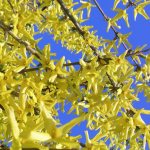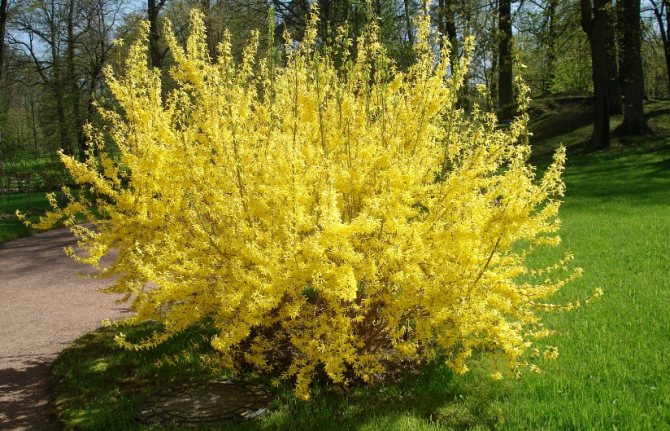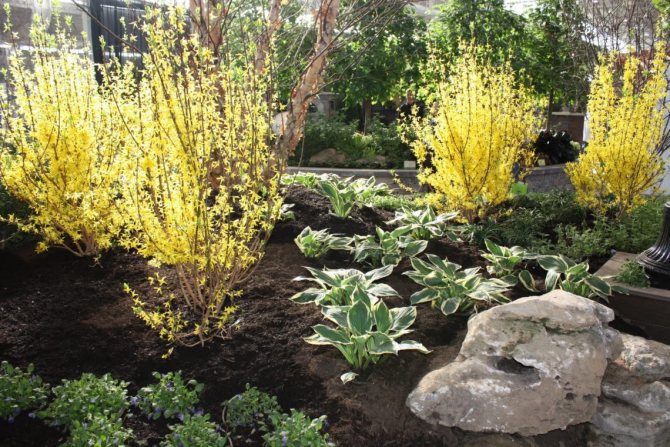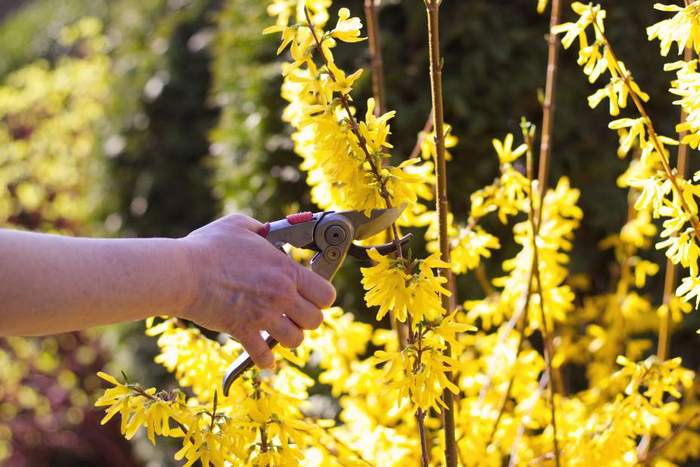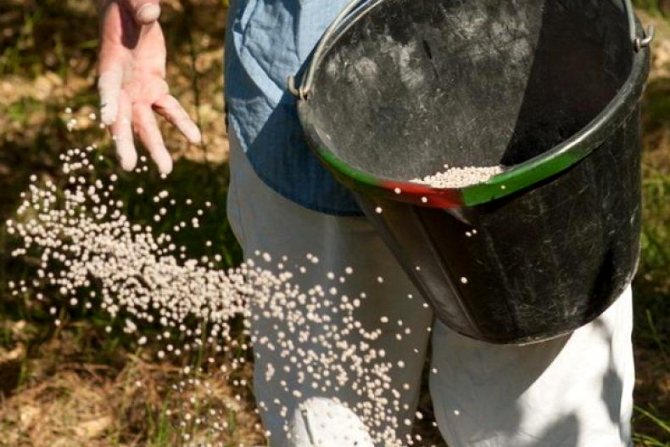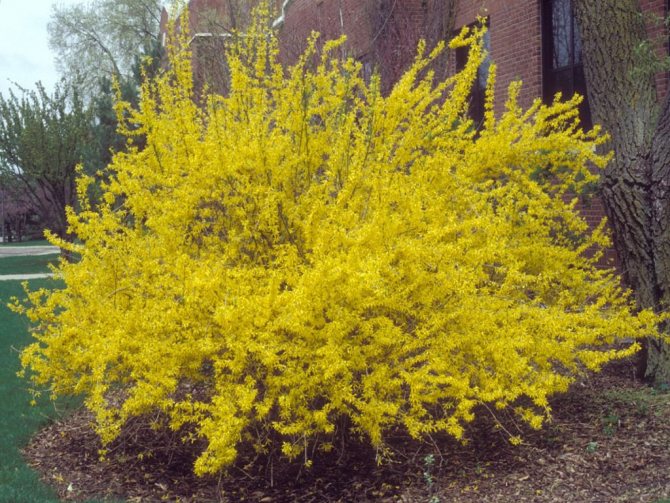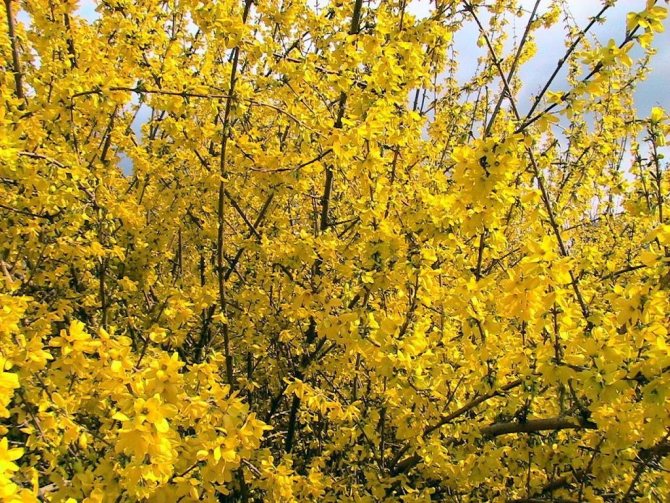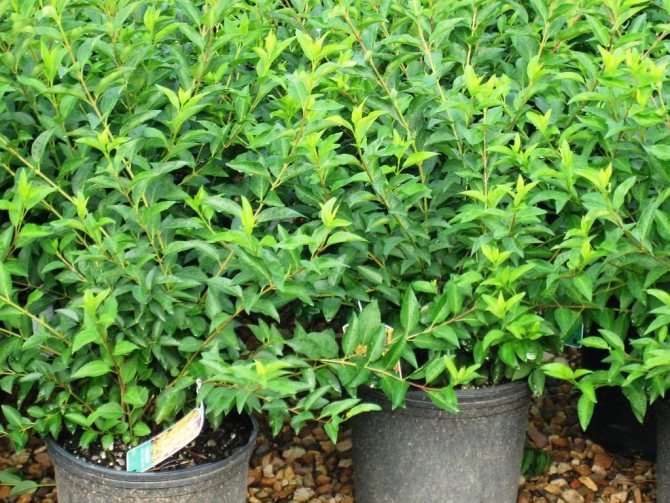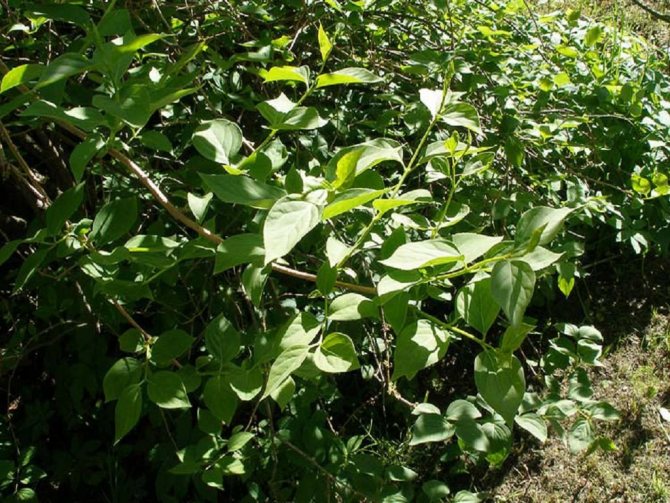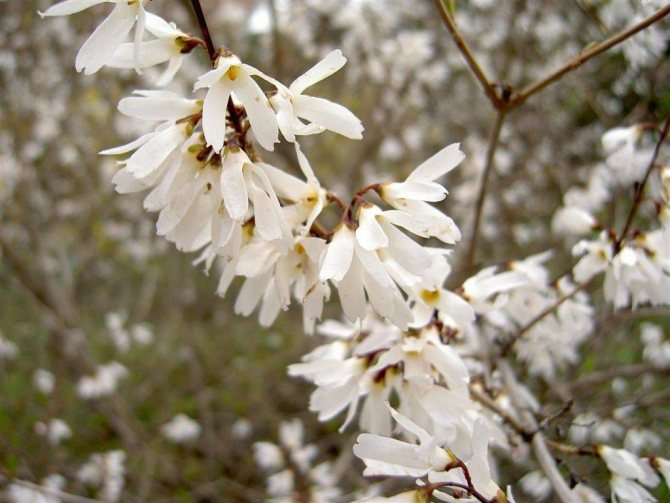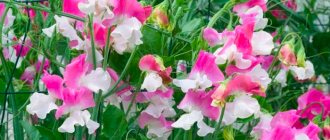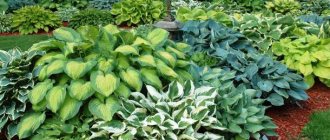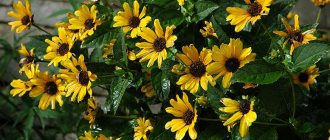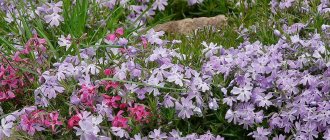Forsythia - shrubs or low multi-stemmed trees from the Olive family. They are prized for their early and profuse flowering, during which the still bare branches are covered with a multitude of golden flowers. In their natural environment, plants of this ancient genus can be found on the Balkan Peninsula and in East Asia. For several centuries they have been actively used in landscape gardening design. Even after flowering, the bushes are quite beautiful. They are covered with emerald leaves, which acquire a purple edging in the fall. Although forsythia is common in warm regions, some species are frost resistant and can be cultivated in temperate climates.
Here you will find out:
Botanical Description: European Forsythia
The plant's height range ranges from 1 to 3 m. Its bark is characterized by a pronounced coarse texture and a dark brown tint. The plant, depending on the species, has a different leaf shape. If in European varieties they are trifoliate, then in Asian ones they are oval and without stipules. The maximum length of 1 leaf is no more than 15-16 cm.
The average flowering time ranges from 3 to 8 weeks. It all depends on the climatic characteristics of the region and compliance with the rules of care.
Regardless of the species, activity peaks in early spring. At this time, a yellow capsule appears, containing winged seeds.
Before you start growing a shrub, it will not be superfluous to familiarize yourself with the nuances listed below:
- Landing is done in a well-lit area;
- Landing with slight shade is allowed;
- Almost all varieties prefer limed soil;
- It is recommended to plant a shrub near conifers;
- In autumn, the leaves of the plant acquire a golden or purple hue;
- Regular maintenance is not required - you just need to create the necessary supply of moisture and nutrients.
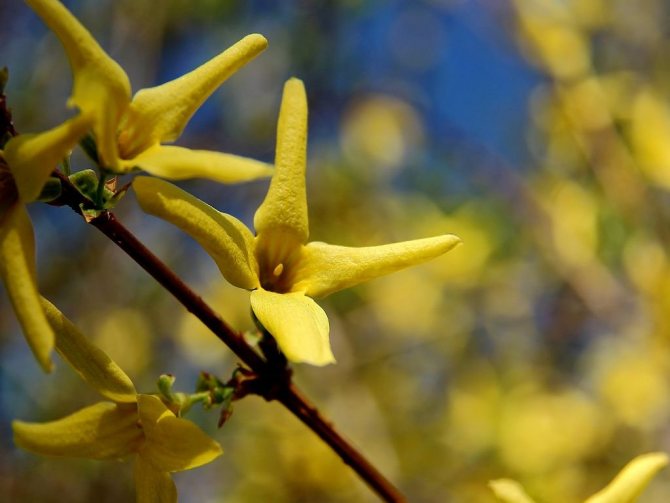
This symbol of the coming spring, as botanists call it, became popular precisely because of its unpretentiousness. The best place for planting it will be a lighted place with lime soil. Flowering peaks in early spring, but in some varieties it shifts several weeks in advance.
Preparing for winter
It is quite simple to protect forsythia from frost during the cold season. It is necessary to cover the trunk with a layer of dry leaves (approximately 10 cm).
At the same time, all branches are bent to the ground and then pinned. Sprinkle them on top with spruce branches. Only in early spring, the entire shelter is removed and the branches are folded back.
Young plants for the winter should be completely covered with spruce branches. If the winter is snowy, then the bush feels great even without shelter. However, it is better to play it safe.
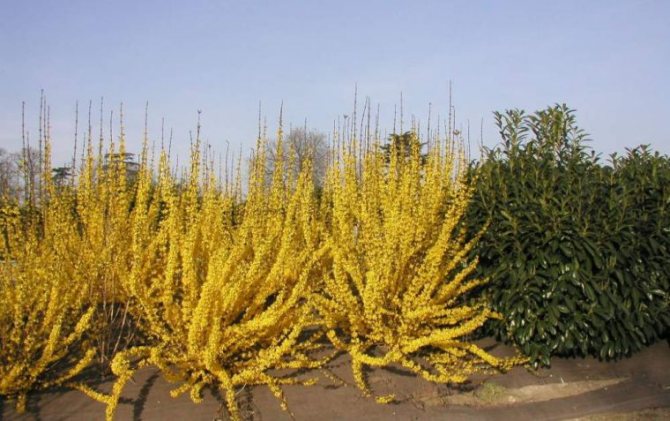

Plant Forsythia: planting and care in the suburbs
In order for the shrub to begin to develop actively, it is better to plant it in spring or early autumn. It is necessary to do everything possible in order to be in time before the impending frost.
All species of this plant cannot stand the wind, so a place is chosen for planting, protected from all sides from the vagaries of nature.
In second place in terms of importance is the physical and chemical composition of the soil. Moderately alkaline soil is preferred.
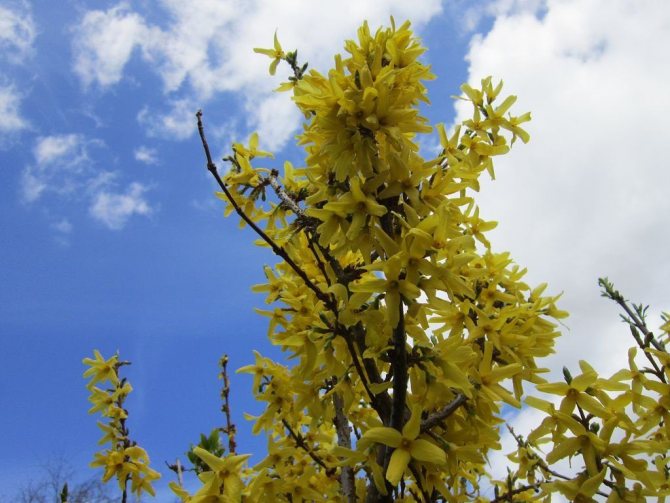

If the soil has more acidic characteristics, then in this case you need to dig it. During this procedure, wood ash is introduced into the soil.
The further procedure is as follows:
- The recommended planting hole depth is 50x50x60;
- You need to make sure that after planting, the rhizome will sink to a depth of less than 40 cm, otherwise for forsythia the first wintering will be the last;
- The minimum distance between shrubs is at least 1.5 m;
- Before planting a plant, a 15-centimeter mixture of broken brick, a 10-centimeter volume of sand, peat, sand and wood ash are poured into each hole in a 2x1x1 ratio;
- After the seedling is in the ground, it is covered with earth and carefully buried;
- It is more advisable to plant the plant in the spring - in this case, minimal maintenance is required.
For autumn planting, it will be necessary to mulch the entire site. Apart from this, the grower must provide adequate hiding place. For these purposes, a breathable material is taken. This is done in order to exclude possible temperature shocks and the effect of a bath.
Reproduction
In one of the previous sections, we already mentioned that forsythia propagates by cuttings and bushes are obtained from cuttings of spring pruning much better. But some gardeners practice autumn breeding.
Reproduction in autumn
Cut a young, but already lignified twig no more than 18 cm long and place it in the ground to a depth of 10 cm.Leave a few ground buds on the surface (three are enough) and cover well with dry leaves so that the stalk overwinters successfully.
Reproduction in spring
Place the green cuttings cut in early June in the root solution, let it stay for a few days. The branches ready for planting are placed in greenhouse conditions: prepare the earthen mixture, pots and plastic wrap in advance to create a mini-greenhouse.
By the fall, young cuttings will have to take root. At the end of September-October, the seedlings can be safely "relocated" to the beds, sprinkled with a thick layer of leaves.
The easiest way reproduction of forsythia - layering. The bush can successfully produce it on its own: the branches, in contact with the ground, take root, giving life to a new bush.
But spontaneous reproduction does not suit gardeners, so they carefully control the process or take part in it, pressing the branch that seemed to them the most successful to the ground.
Note to gardeners: pruning forsythia in the fall
At the ripening stage, only intermediate sanitary pruning is carried out. Dried and frozen shoots are subject to mandatory removal. If we talk about adult shrubs, then they need to remove shoots and other elements that have faded. Before picking up your garden shears, you need to remember a few rules. The first says that the faded branches need to be shortened by ½ of the original length. The second rule applies to dead branches.
In this case, a section is subject to removal, the length of which ranges from 4 to 6 cm.
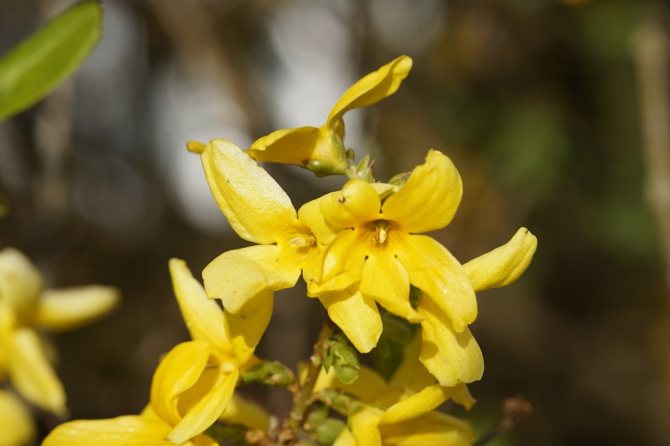

In addition, attention should be paid to the following recommendations:
- For rejuvenation, it is recommended to prune all branches by 4-6 cm - this will accelerate the growth of young shoots;
- The faster the forsythia grows, the less it blooms;
- It is recommended to rejuvenate it no more than once every 4 years;
- The main pruning is done in the summer.
Gardeners should be aware that with the help of pruning, you can change the density of the shrub, the height and shape of the bush in one direction or the other. For example, depending on the direction in landscape design prevailing in a suburban area, it can be shaped like a bowl or an oval.
Shrub Forsythia: types and description
European forsythia or, as it is also called, forsythia is the most common type of shrub in the Old World. You can meet her both in the Moscow region and in the Urals. The height of a shrub with entire and oblong leaves is no more than 2 m.
If you pay attention to the flowers, you can see bell-shaped yellowish buds.The second most common species is the Giralda.
Its only difference from its European counterpart is a high degree of sensitivity to cold and slightly twisted petals.
In addition, botanists distinguish other varieties of an ornamental plant:
- Hanging - it is distinguished by its greater stature and height - up to 3 m. Slightly below the spreading crown there are arched and thin branches, differing in a slightly olive or reddish tint.
- Egg-shaped (Oval) - the altitude range ranges from 1.5 to 2 m. The spreading branches are gray-yellow in color. The maximum length of 1 leaf is 7 cm. Active flowering begins earlier than any other type of forsythia. This variety tolerates winter and drought well.
- Spectabilis - experts in the field of garden design rightly call it one of the most beautiful. Despite the 1-meter height, the crown diameter reaches almost 130 cm. In the warm season, the leaves are green, and in autumn they are purple.
- Intermediate Gold (Linwood) - like the previous type, is distinguished by increased resistance to cold. With an average growth rate, the maximum crown height ranges from 2 to 2.2 m. By the time of flowering, the crown is covered with a solid carpet of yellowish flowers.
- Medium Goldsauber - peak flowering in late October. The fruits are light brown in color.
- Greenest is another option for garden design. The leaves and crown have a pleasant shade.
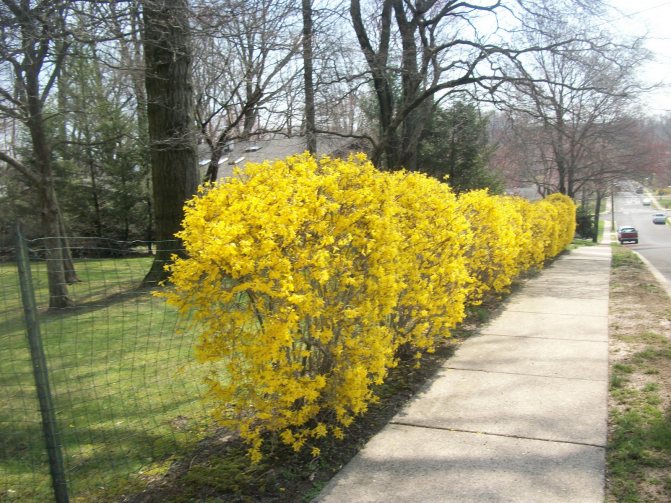

Korean (kumson) - the bush has elongated green leaves with pronounced milk veins. The botanical description of this species suggests that this plant prefers fertile soils. Otherwise, each flower will get too pale color.
Varieties of culture
Consider the most common types that can be found in our climatic conditions:
- European (Forsythia Europaea) is a species that can most often be found in our area. A low-growing tree reaches a height of no more than 2 meters. The branches grow straight. The leaves have an oblong straight shape up to 7 cm long. The blossoms are not collected in inflorescences, they are placed one by one, in appearance they resemble a bell with a golden yellow tint.
- Giralda (Forsythia Giraldiana) - does not tolerate frost well, very similar to the previous species. Stems are tetrahedral, brown in color with a pronounced yellow tint. The leaves have a clear oval shape up to 10 cm in length. Flowering begins in early May, flowers are yellow with a characteristic twisting of the petals.
- Hanging (Forsythia Suspensa) - reaches a height of up to 3 meters (more like a tree). The branches are arcuate, tetrahedral with a characteristic red color and brown or olive tint. The inflorescences are bundle-shaped, in one there can be five large yellow flowers.
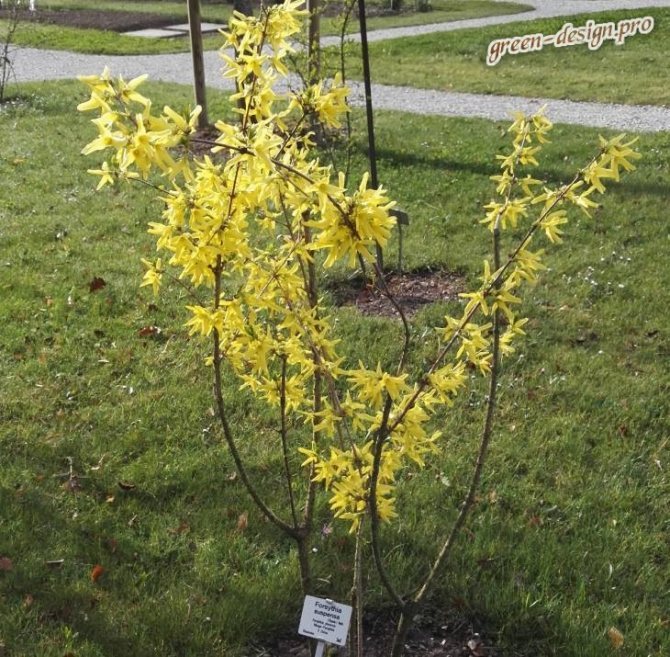

Hanging forsythia (Forsythia Suspensa) - Greenest (Forsythia Viridissima) is a tall shrub with green branches pointing upwards. The leaves are very close to one another, simple in shape with denticles along the edge of the leaf, rather large, compared with other species (15 cm long, 4 cm wide). The color of the leaves is rich dark green. Flowers are collected in small inflorescences. The characteristic behavior of this species is its endurance in dry climates without regular watering.
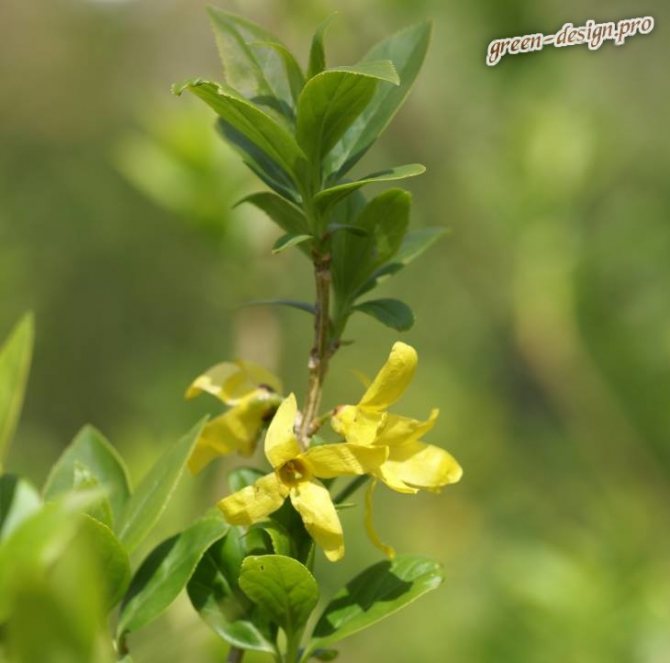

Forsythia greenest (Forsythia Viridissima)
Basic rules for growing and care
A cool period is suitable for planting a plant (this can be done in autumn and spring). At this time, the soil is rich in water, so the shoot can quickly take root. Given the shade tolerance, it is recommended to grow forsythia in spacious areas where sunlight gets well, there are no cold through winds. Forsythia does not withstand swampy areas and compressed soil. To enjoy the bright bloom, you need to carefully work out the area even before planting:
- we dig a hole at least 0.6 meters;
- a drainage system (a mixture of chipped concrete and crushed stone) is poured into the bottom of the hole, contributing to favorable air circulation;
- a mixture useful for the root system is laid out on the drainage - humus, sand, ash, all this should occupy half of the dug hole;
- after the performed manipulations, the turn came to planting a seedling, the root is covered with loose earth, always with its watering.
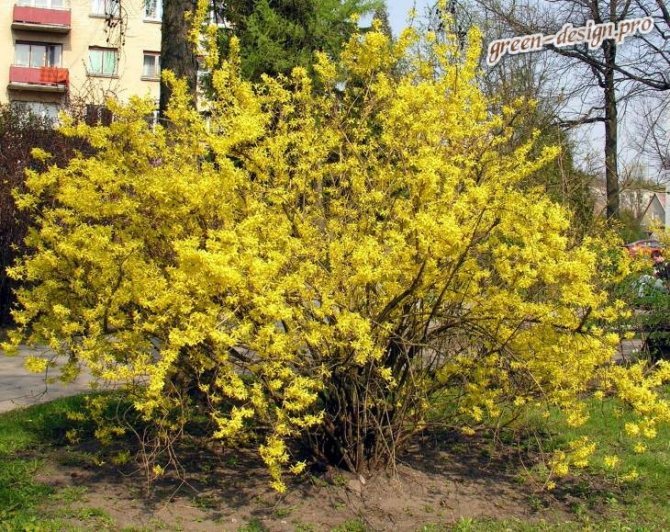

Caring for a forsythia shrub involves the following steps:
- If there is enough rainfall throughout the spring and summer, the shrub does not need to be watered. If there is no precipitation, watering is needed several times a month at least 1 bucket per 1 bush.
- Fertilization takes place in three stages for the entire period: in spring - with the help of ordinary humus, during flowering - with minerals useful for the root, before preparing the plant for the winter period - it is treated with the universal fortified agent "Kemira".
- Caring for the bush is needed after winter, when clearly visible dry branches or those that have frozen over the winter, only they will lie cut off. After the plant has faded (at the end of summer), each branch of an adult bush is shortened in half. If the branches of the bush are very old, for rejuvenation for the winter you need to cut off all branches up to 6 cm from the soil, this procedure should be carried out no more than once every 5 years.
For the winter, wrapping up the bush is as easy as shelling pears - young branches can be tilted and wrapped near the ground, if the branches of the bush are old enough, then it is enough to wrap the stems near the ground with fallen leaves at a level of 10 cm from the root.
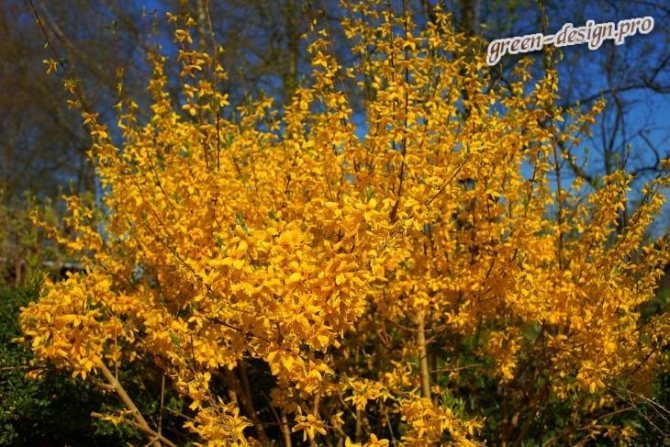

What care does a forsythia bush require: recommendations for beginners
In most cases, the rules are the same as for caring for any other garden plant. If the region has a normalized balance of light and moisture, then additional watering will not be required. In dry weather, it is necessary to apply up to 12 liters of moisture under each bush.
Watering frequency - no more than 2 times within 1 month. After each watering, the soil must be loosened with the subsequent removal of weeds.
This should not be neglected, otherwise the root system will not receive enough air.
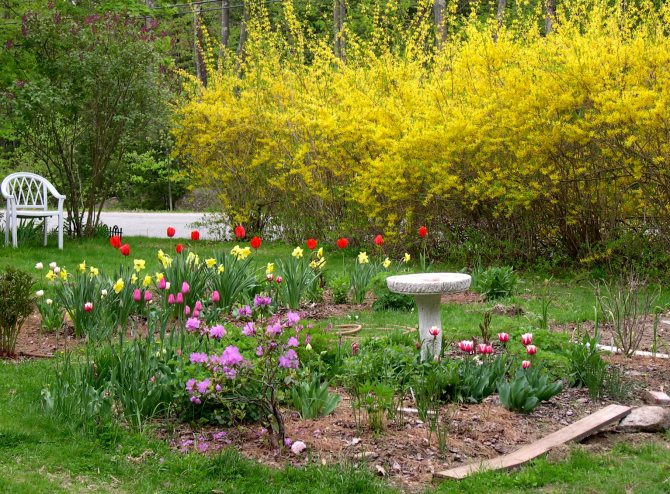

The following recommendations will help reduce the likelihood of mistakes when leaving:
- Mineral fertilizers are applied in April;
- After flowering is complete, top dressing is applied;
- In the spring or early autumn, a transplant is made.
Forsythia is an ornamental plant that is distinguished by its unpretentiousness. You can grow it on personal plots. For him, an illuminated place is chosen, protected from wind and cold weather. The type of shrub is selected taking into account the climatic characteristics of the region and the ultimate goal. Experienced gardeners do not recommend getting carried away with frequent circumcisions. This will not have the best effect on the flowering intensity.

